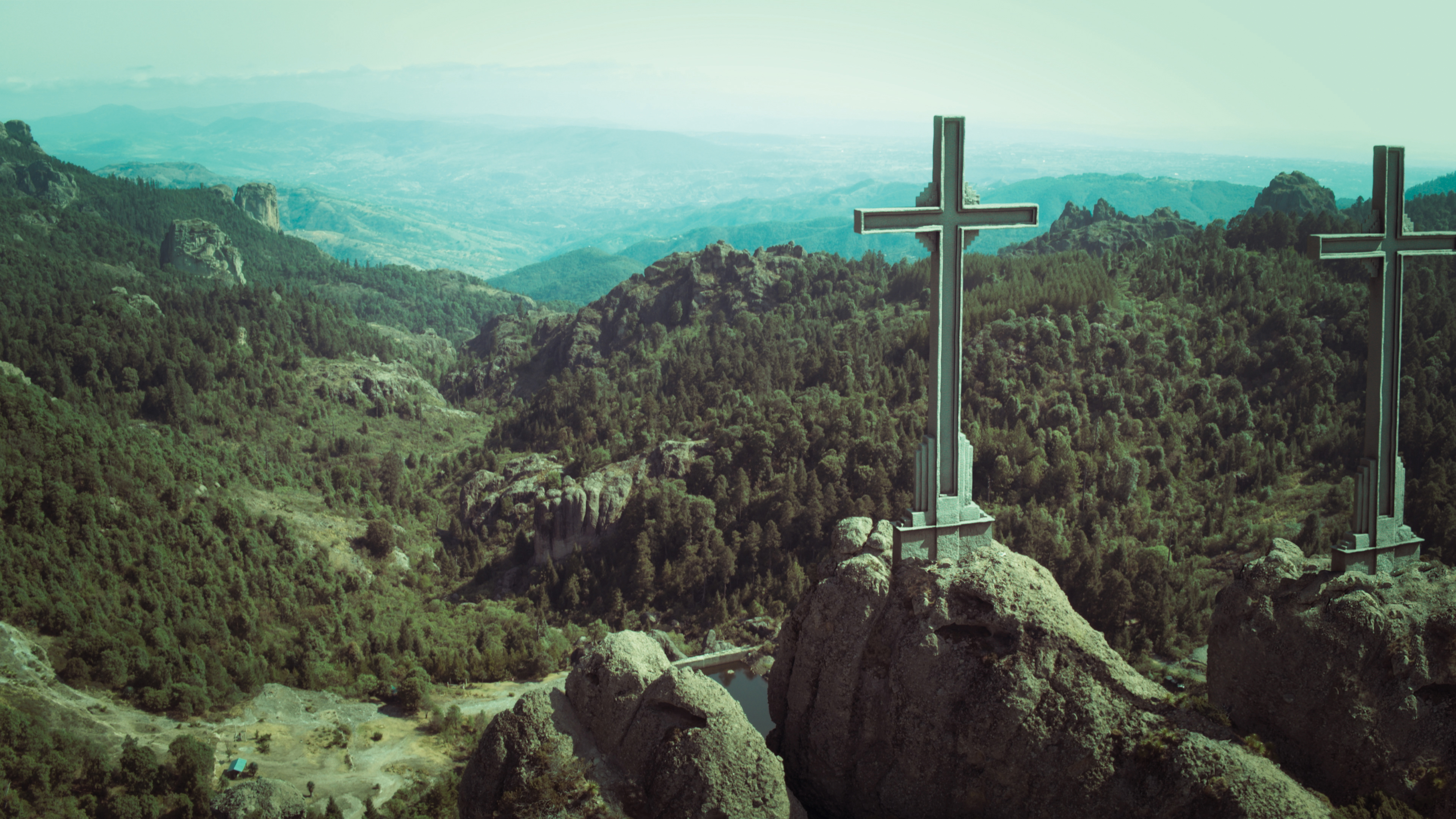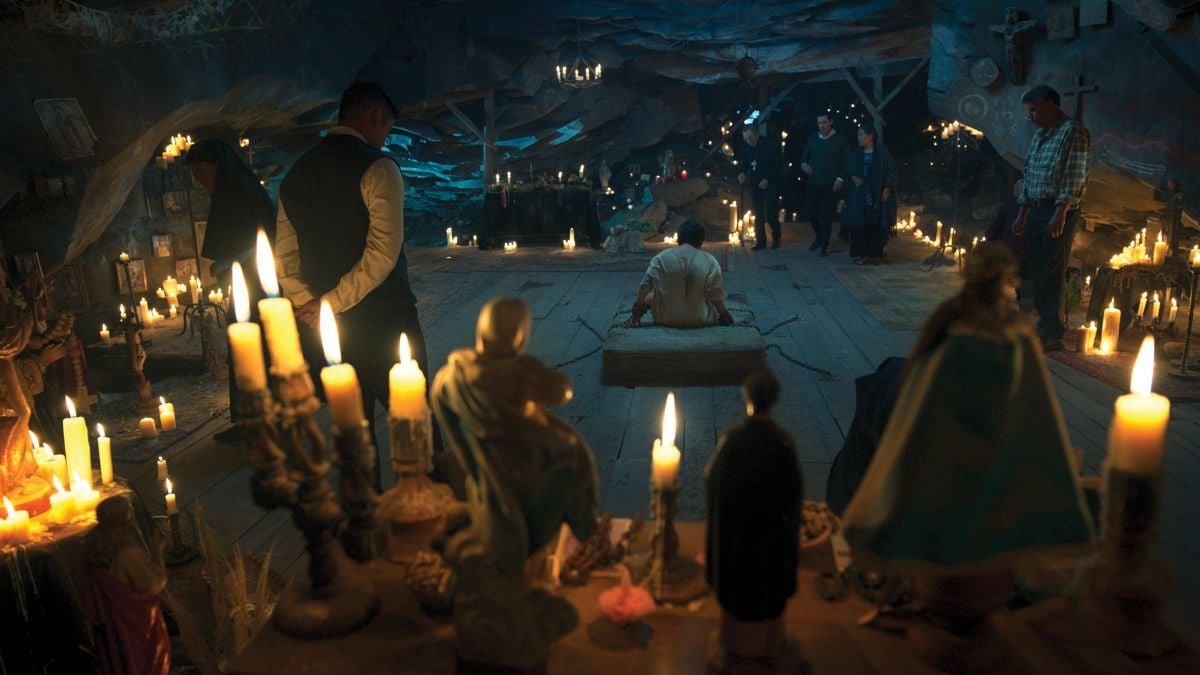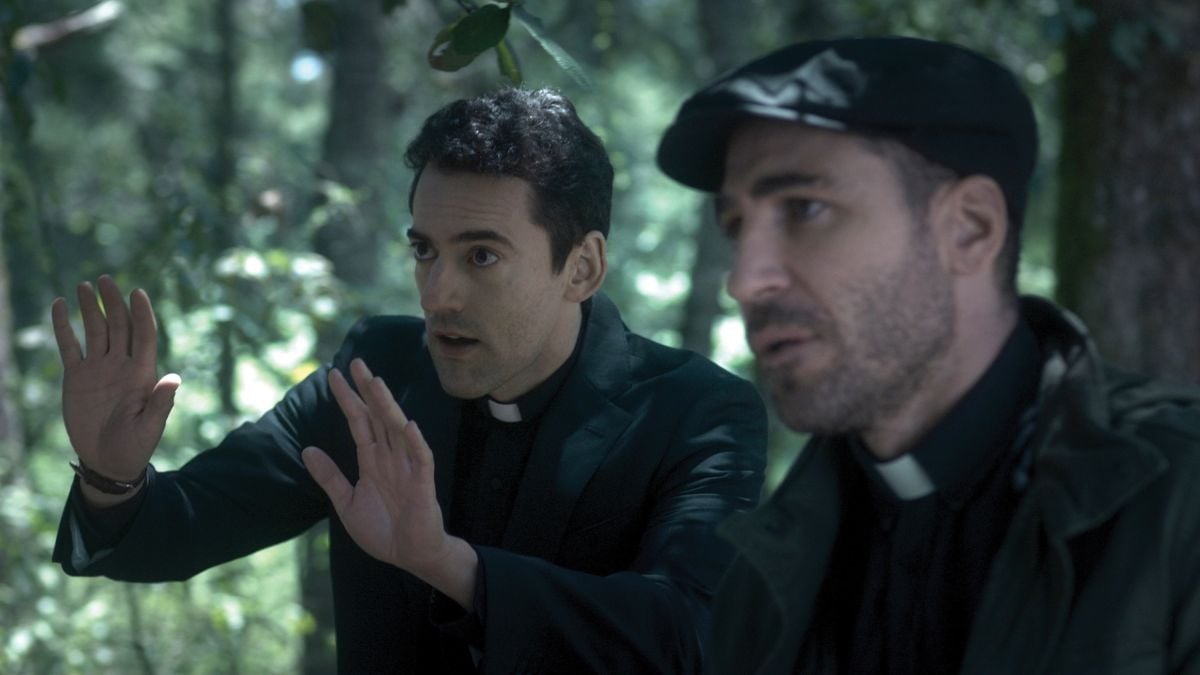
Capturing Miracles: The Envoys
Antonio Riestra, ASC, AČK, AEC on shooting this supernatural drama on location in Mexico.
The Envoys, Paramount Plus’ first Latin American original production, is a religious thriller of cinematic proportions. Produced by Argentinian Academy Award winner Juan José Campanella, the Spanish-language series follows two Catholic priests as they are sent from the Vatican to a small town in Mexico to investigate the legitimacy of another priest who has become known for performing miracles. Soon after they arrive, the priest in question vanishes, leaving more questions than answers in his wake.
The production, as well as the story, is truly international in scope. While The Envoys was filmed in the historic town of Mineral del Chico and the forests surrounding Mexico City, Campanella’s production company, 100 Bares, is based in Buenos Aires, Argentina, the same country where postproduction was performed.
Cinematographer Antonio Riestra, ASC, AČK, AEC shot all eight episodes of the series. “We were going to shoot just the pilot,” he says — adding that he was surprised when Paramount Plus “decided to go ahead and shoot the whole series. It went from ‘Let’s shoot a pilot’ to ‘Let’s shoot eight episodes.’”
“I feel that these two priests have come to this village from a completely different planet — they need to see themselves in this darkness, and lose themselves a bit, to see the light.”
It was a daunting task, but Riestra embraced the challenge. “One of the things that attracted me to the story is the universal experience of how the beliefs that you learn when you’re a kid become something kind of sacred,” he says. “Eventually, as you grow up, you create your own concept of a higher power. You figure out what you believe in and how you see yourself in that world. Thankfully, there was a lot in our story to work with.”
The cinematographer drew inspiration from a quotation that has stuck with him. Says Riestra, “The whole concept I arrived at comes from a phrase I read from Ethan Hawke: ‘If you can’t shine a light into dark corners, the demons that live there will never go away.’ I feel that these two priests have come to this village from a completely different planet — they need to see themselves in this darkness, and lose themselves a bit, to see the light. It’s this concept of losing yourself to find yourself; by getting rid of certain beliefs, you get to something that is closer to what you really are. That’s what encircles the whole progression in the story — you see how these two characters get there.
“The story and the lighting got darker and darker,” he continues. “There are colors that pop out of it in the lower-contrast areas. This is just the way light and shadow behave.”
Collaborating with Campanella, who also served as director on multiple episodes, was a highlight for Riestra. “I really like his work — he has a wonderful sensibility,” the cinematographer says. “I admire his visual style and storytelling. I was immediately attracted to working with him, and I was also attracted to the subject matter — it has this combination of belief and faith, natural and supernatural. The events in the story are based in reality instead of something that is above reality.”
“The idea was that the show would never look like something supernatural — it would be very real, and the characters would be flesh and bone.”

As the series opens, a man gets a brief taste of the hereafter before being brought back to life following a fall from a building. For Riestra, grounding such material was key. He says, “The idea was that the show would never look like something supernatural — it would be very real, and the characters would be flesh and bone. The atmosphere had to be correct for the emotions and for the environment. The camera needed to be close to the actors, so we shot everything handheld. We made it organic — as ‘normal’ as possible, in a way. We wanted it to seem as if anyone in the audience could be there.
“The decision to go handheld for the whole series was so that we could be near the actors, with the most flexibility,” Riestra adds. “That strategy freed us up because we weren’t tied to a dolly, a tripod head, or any other device. We also shot with two cameras simultaneously, which allowed us to get two different frame sizes at once, both close and wide. Jose brought in the concept of shooting with two cameras, so we lit for that and I think it was an excellent choice.
“The 37mm [Tribe7] Blackwing7 quickly became our favorite lens because it allowed us to do wide coverage and tighter coverage on the same [focal length],” the cinematographer continues. “The 37mm is an immersive lens. It allows you to be close and stay in context. It has a special feel — you can almost breathe with the characters and feel their feelings.”
The Blackwing7s used on the production were Riestra’s own custom lenses. “I had just gotten the set,” he says. “I was enchanted by the look of the lenses, so I spoke to my friend Neil Fanthom — mastermind of Tribe7 — who chose a set for me. It combines their first set, the Binaries, with the evolution of the Binaries, which is the B series.” Riestra’s custom set combines several of Tribe7’s tuning options for a combination of flare, contrast and focus-falloff attributes.
The aesthetic quality of the Blackwing7s appealed to Riestra for the moody tone The Envoys required. “The lenses are soft and gloomy and easy to flare. Also, the way you use the T-stop can change the nature of the lens. The contrast changes, so you have to learn how to use the lenses creatively.”

Riestra reports that the production shot eight episodes in 12 weeks. “We were shooting an episode every week and a half,” he says. “We moved from one location to the other in groups, so even if everything shot on one location involved scenes from different episodes, we managed to shoot it all together.” Though the season had multiple directors — Campanella, Martino Zaidelis, Camilo Antolini and Hiromi Kamata — the rest of the crew remained the same, “so we were able to [maintain a single] aesthetic.”
Though the clock was always ticking during production, Riestra had the opportunity to take his time during prep. “I prepped for eight or nine weeks,” he says. “I had time to really look at the locations and make a ‘vision board’ — I had the whole story on a wall. Then I would just add bits of inspiration — paintings, photographs or whatever I saw — that would bring something new to the story. It’s how I incorporated my personal touch.”
“For the most part, we used HMI and tungsten lights, [Arri] SkyPanels, and the Hudson Spider. We often used 12-lamp Maxi Brutes with smoke to add atmosphere. I love the look of tungsten — the color and texture of it — so I used it everywhere I could. HMIs also have a particular feel; each lamp provides different qualities. The Hudson Spider was used [throughout the production]. It’s incredibly light, simple and multipurpose. It provides you with an easy and efficient solution for the last touch or for the only source. I aimed for a one-source look, overall. In the end, I mixed everything. There are so many great tools these days that the possibilities for the palette are endless — like a painter’s blank easel waiting to be colored.”
Much of the visual aesthetic of the series was influenced by the filming locations. “The story happens in a fictional place called San Acacio, which in reality is the town of Mineral del Chico, [around 80 miles] northeast of Mexico City,” Riestra says. “The real town is up in the mountains, so it’s cold, and it’s surrounded by a pine-tree forest. It’s a very small, beautiful village; the people don’t let it grow more than the size it is now, so it has kept its roots. It was originally an English town built by English people, so the houses are all metal, painted red — so picturesque. We painted the village church back to its original color, and the rest of the show’s palette was also inspired by the colors in the village itself.” Scenes set in Bulgaria and Rome were shot in Mexico City, as were many of the village interiors. Riestra feels that these locations tied the look together “quite seamlessly,” he says. “You could never tell that some parts of the village scenes were shot elsewhere. You never see something that doesn’t belong. The show’s production designer, Barbara Enriquez, did a wonderful job.
As Riestra worked with four different directors over the course of the series, he found being the constant presence a rewarding experience. “I enjoyed the differences of working with different filmmakers,” he says. “Each director had a particular way of doing things — preparing, blocking, and talking to the actors — and I learned something from each of them. By the end of production, I’d become friends with all four of them.”
After production wrapped, Riestra stayed in Mexico as postproduction took place in Argentina. “I worked remotely with the colorist — Fernando Rivas at Telefe — and the post team,” he says. “Director Camilo Antolini was also involved in the process. They sent me the episodes and stills. I graded a bunch of frame grabs, about 100 or 200 per episode. I sent the stills back, and then we started a back-and-forth dialogue. The process was complicated by the time difference and Covid, but I think we did a good job with the long-distance communication.”
The success of the international production was contingent on a dedicated crew. “It’s very rewarding to have a group of talented people that conceived the story from the production side to the creative side,” Riestra says. “There was a lot of care to meet a standard, and I obviously include the studio in that. Having producers like Muriel Cabeza, Eamon O’Farrill, Mónica Lozano and Mario Zamacona made for a great combination because they care about the quality of the project — they were there all the time. When you have a producer next to you, everything is easier.”

Antonio Riestra ASC, AČK, AEC (pictured at camera) captured The Envoys with two Arri Alexa Mini LFs, cross-shooting most scenes in order to maintain a quick pace for the tight production schedule. “I’ve been an Alexa user since day one,” he says. “I love the sensor, and the evolution of the camera has made it easier and more flexible to use. I’m a huge fan of [shooting in larger format]. It makes you feel present without invading.”






